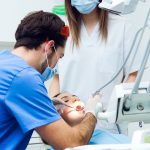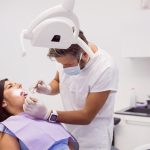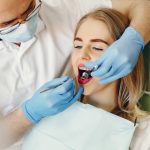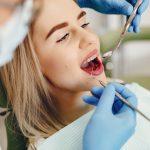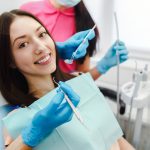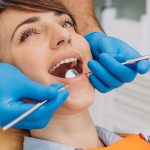Just had a tooth pulled and wondering what you can safely eat without risking pain or complications?
You’re not alone — it’s one of the biggest concerns after an extraction.
Whether it’s the first night after your procedure or the crucial recovery days that follow, making the right food choices can speed up healing and protect the sensitive extraction site.
In this complete guide, you’ll learn exactly what food to eat after tooth extraction, what foods and drinks to avoid, and how to support a smoother, more comfortable recovery.
Why Your Diet Matters After a Tooth Extraction?
Your mouth will be tender and slightly swollen after a tooth is removed. A clot forms in the socket to protect the area and begin the healing process. Disturbing this clot or putting pressure on the area can delay healing and cause painful complications. That’s why people often ask questions like what to eat after a tooth extraction or what not to eat after tooth extraction.
Choosing soft, easy-to-chew foods helps avoid irritating the extraction site. The right nutrition also supports your immune system and helps your body recover faster. In contrast, eating hard, spicy, or chewy foods too early can increase pain, cause bleeding, or even lead to dry sockets.
First Night After Tooth Extraction: What to Eat?
The first few hours after your procedure are all about rest, hydration, and gentle care. The first night after tooth extraction what to eat is a common concern. You want to keep it simple, smooth, and easy to swallow. Soft foods that are room temperature or cool work best. Avoid anything that requires chewing or creates pressure in your mouth. Drinks are allowed, but skip the straw. Using a straw can dislodge the clot and delay recovery.
On the first night, you should focus on keeping your mouth clean and free from any food particles that might stick around the extraction site. Hydration is important, so sip water regularly and give your mouth the time it needs to settle from the procedure.
Days Two to Five: What Food to Eat After Tooth Extraction?
Once the initial tenderness starts to fade, you can slowly introduce slightly thicker soft foods into your diet. People often ask after tooth extraction what to eat during this recovery phase. Think of this time as an opportunity to keep your meals nourishing but still gentle. Foods that are high in protein and vitamins are ideal for helping the body repair the area where the tooth was removed.
You should avoid anything hot, acidic, or spicy, as well as foods with seeds, nuts, or small pieces that can get stuck in your gums. What food to eat after tooth extraction should still be mostly soft and easy to manage but can include a bit more texture as long as you chew carefully and stay away from the extraction site. This is also when many patients start asking what to eat after wisdom tooth extraction or what to eat after multiple tooth extraction, depending on the type of surgery they had.
What to Eat After Wisdom Tooth Extraction?
Wisdom tooth removal tends to involve more discomfort and swelling than a simple extraction. That’s why people frequently search for specific answers to what to eat after wisdom tooth extraction. With wisdom teeth, especially if more than one is removed at once, it’s important to continue a soft diet for a bit longer. The back of the mouth is more sensitive and harder to clean, so food that’s too hard or sticky can easily cause irritation.
During this stage, choosing food that glides over your teeth instead of requiring biting or chewing is key. Take your time when introducing new textures and always monitor your mouth for signs of pain or discomfort. If anything feels off, go back to simpler meals and consult your dentist.
What to Eat After Multiple Tooth Extraction?
When you have several teeth removed during one appointment, you’ll want to be extra cautious. Many patients wonder what to eat after multiple tooth extraction, especially because it’s harder to chew when there are multiple healing areas in your mouth. In this case, stick with foods that can be swallowed easily and provide enough energy for your body to heal.
Soft grains, blended meals, and smooth soups can work well. The more teeth that are removed, the more your jaw and gums will need rest. Eat smaller meals more often rather than trying to chew a large serving at once. Let your body adjust slowly, and never rush to return to harder foods.
What Not to Eat After Tooth Extraction?
Knowing what not to eat after tooth extraction is just as important as knowing what is safe. Certain foods and drinks can damage the healing site or delay recovery. Crunchy snacks like chips, hard bread or anything that requires significant chewing should be completely avoided. Sticky or chewy foods can also get caught in the empty socket, and create discomfort or risk infection.
Avoid spicy foods, acidic drinks, and anything too hot, as they can irritate the sensitive tissue. One of the most important things to avoid is drinking through a straw. The suction can pull the clot out and expose the bone, leading to a dry socket, which is painful and requires follow-up treatment. Alcohol and carbonated drinks should also be avoided for at least a few days, as they can disrupt healing and cause unnecessary swelling.
What to Eat and Drink After Tooth Extraction for Faster Recovery?
By now, you may be wondering not just what to eat but also what to eat and drink after tooth extraction that promotes fast and healthy healing. Water remains the best choice when it comes to hydration. It helps flush bacteria and keeps your mouth clean. Pair that with nutrient-rich soft foods, and you’ll be supporting your body both inside and out.
Stay consistent with your meals, get enough rest, and follow any post-operative instructions your dentist provides. If you’re ever unsure, it’s always safe to go back to cool, soft foods until your mouth feels better. Don’t rush into eating solid meals just because you feel hungry. Your mouth will thank you later.
Conclusion
Choosing the right meals makes a big difference in your healing. Whether you’re figuring out what to eat after wisdom tooth extraction or what not to eat after tooth extraction, stay focused on soft, nourishing foods. Your recovery depends on gentle care, smart eating, and knowing exactly what to eat and drink after tooth extraction.
Frequently Asked Questions
What are the best foods to eat immediately after a tooth extraction?
Soft, cool, and smooth foods like yogurt, applesauce, mashed potatoes, and smoothies (without a straw) are ideal for the first 24 hours after your procedure.
How long should I stay on a soft food diet after extraction?
Most people need to stick to soft foods for about 5–7 days. However, if you had multiple teeth or wisdom teeth removed, you may need longer based on your dentist’s advice.
Can I drink coffee after tooth extraction?
It’s best to avoid hot drinks like coffee for at least 24–48 hours. Heat can dissolve the clot and slow down healing. Once the swelling reduces, you can slowly reintroduce lukewarm beverages.
Why is it dangerous to use a straw after a tooth extraction?
Sucking through a straw can create pressure that dislodges the blood clot protecting your extraction site, leading to a painful condition called dry socket.
When can I start eating solid food again?
You can typically begin adding soft solids like scrambled eggs, soft pasta, or tender fish around day 3–5, depending on how comfortable you feel and your dentist’s advice.
What foods should I completely avoid after a tooth extraction?
Stay away from crunchy, chewy, spicy, or hard foods like chips, popcorn, nuts, and crusty bread until your mouth fully heals.
What are signs that my extraction site isn’t healing properly?
Excessive pain, swelling, bad breath, or pus at the site could signal infection or dry socket. Always contact your dentist if you notice these symptoms.

